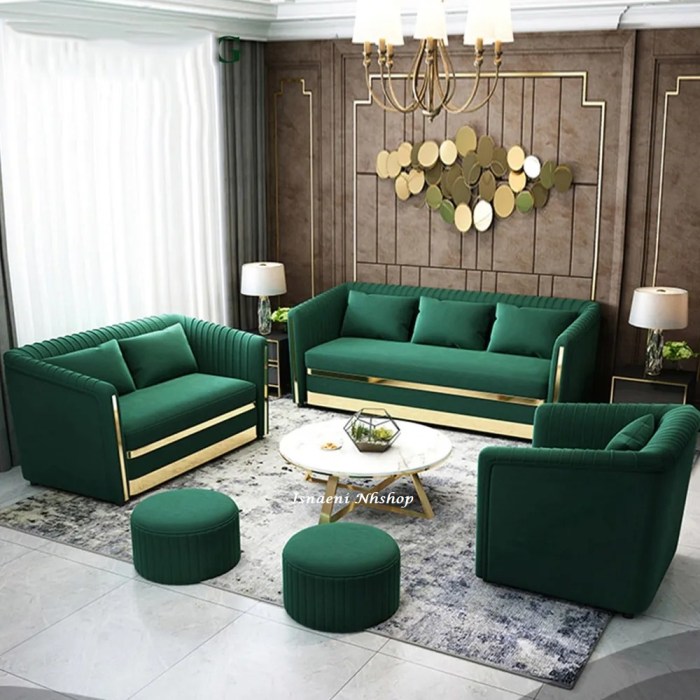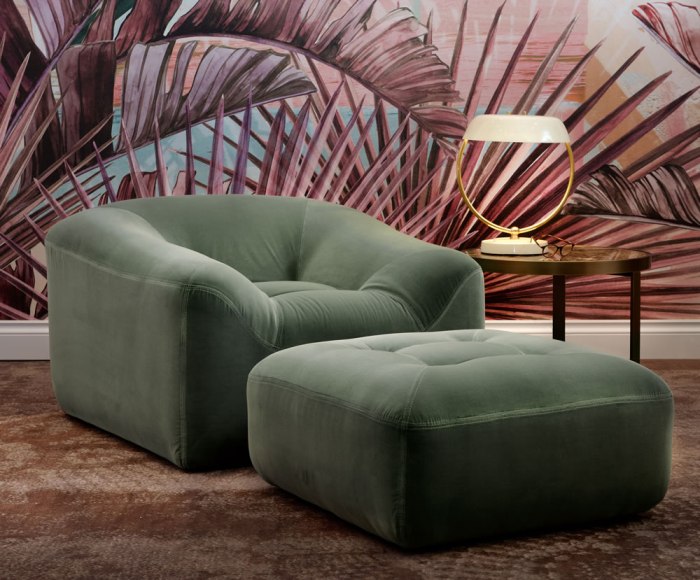Green-certified luxury furniture represents a fascinating intersection of high-end design and environmental responsibility. This burgeoning market caters to discerning consumers who value both exquisite aesthetics and sustainable practices. The demand for pieces crafted from responsibly sourced materials and manufactured with minimal environmental impact is steadily increasing, reflecting a growing awareness of the importance of ethical consumption.
This growing sector offers a wide range of options, from meticulously handcrafted wooden pieces to innovative designs incorporating recycled materials. The certification processes involved ensure transparency and accountability, allowing consumers to make informed choices that align with their values. Understanding these certifications and the materials used is key to appreciating the true value and impact of green-certified luxury furniture.
The pursuit of luxury often clashes with environmental consciousness. However, a growing segment of the market recognizes that opulence and sustainability aren’t mutually exclusive. Green-certified luxury furniture bridges this gap, offering exquisite pieces crafted with eco-friendly materials and responsible manufacturing practices. This comprehensive guide delves into the world of sustainable luxury furniture, exploring its benefits, certifications, materials, and considerations for discerning consumers.
Understanding Green Certifications in Furniture
Navigating the world of eco-friendly furniture can be challenging. Numerous certifications exist, each with its own criteria. Understanding these certifications is crucial to ensuring your purchase aligns with your sustainability values. Some of the most prominent include:
Forest Stewardship Council (FSC) Certification
The FSC is a global, non-profit organization that promotes responsible forest management. FSC certification ensures that wood used in furniture comes from forests managed according to strict environmental and social standards. This guarantees sustainable harvesting practices, protecting biodiversity and minimizing the impact on ecosystems. Look for the FSC logo on furniture to verify its origin.
Sustainable Forestry Initiative (SFI) Certification
Similar to FSC, the SFI certification focuses on responsible forest management. While both certifications promote sustainable forestry, their standards and approaches may differ slightly. SFI certified wood ensures that the timber comes from forests managed for long-term health and productivity.
LEED Certification (for Buildings, but relevant to furniture choices), Green-certified luxury furniture
While not a direct furniture certification, LEED (Leadership in Energy and Environmental Design) is a widely recognized green building rating system. Choosing furniture that contributes to LEED points within a building project can indirectly ensure high environmental standards are met. This often involves considering materials with low VOC emissions and recycled content.
Other Certifications and Eco-labels
Several other certifications and eco-labels focus on specific aspects of sustainability, such as recycled content, low VOC emissions, and responsible manufacturing. These can include certifications related to organic cotton, recycled metal, and sustainable finishes. Always check the specific claims and the organization issuing the certification to understand its validity and scope.
Materials Used in Green-Certified Luxury Furniture
The materials used play a pivotal role in determining the environmental impact of furniture. Green-certified luxury furniture often incorporates:
Sustainable Wood
FSC or SFI certified hardwoods like oak, walnut, and maple are popular choices. These woods are sustainably harvested, ensuring the long-term health of forests. Bamboo, a rapidly renewable resource, is another excellent option for durable and eco-friendly furniture.
Recycled and Reclaimed Materials
Giving new life to old materials significantly reduces the environmental footprint. Recycled metal, such as steel and aluminum, and reclaimed wood contribute to a circular economy. These materials often boast unique character and add a touch of vintage charm to luxury pieces.
Organic and Sustainable Fabrics
Organic cotton, linen, and hemp are natural fibers grown without harmful pesticides or fertilizers. These fabrics are biodegradable and offer a comfortable, breathable alternative to synthetic materials. Recycled fabrics, such as recycled polyester made from plastic bottles, are also gaining popularity.
Low-VOC Finishes and Paints
Volatile organic compounds (VOCs) are harmful chemicals released into the air from paints and finishes. Green-certified furniture typically uses low-VOC or no-VOC finishes, ensuring a healthier indoor environment. These finishes minimize the risk of respiratory problems and other health issues.
Benefits of Choosing Green-Certified Luxury Furniture
Investing in green-certified luxury furniture offers numerous benefits beyond its aesthetic appeal:

- Environmental Responsibility: Reduces your carbon footprint by supporting sustainable forestry, responsible manufacturing, and the use of recycled materials.
- Improved Indoor Air Quality: Low-VOC finishes contribute to a healthier living space, minimizing exposure to harmful chemicals.
- Durability and Longevity: High-quality, sustainably sourced materials are often more durable and long-lasting than mass-produced alternatives.
- Ethical Sourcing: Supports fair labor practices and responsible sourcing of materials, ensuring ethical production.
- Increased Value: Green-certified furniture often holds its value better over time, reflecting its superior quality and sustainability.
- Enhanced Style and Uniqueness: The use of reclaimed materials and natural fibers often results in unique and stylish pieces.
Considerations When Buying Green-Certified Luxury Furniture
While choosing green-certified furniture is a responsible decision, it’s essential to consider the following:
- Verification of Certifications: Always verify the authenticity of certifications by checking the organization’s website or contacting the manufacturer.
- Transparency and Traceability: Look for brands that provide clear information about the origin of their materials and manufacturing processes.
- Price: Green-certified furniture may be more expensive than conventionally produced pieces due to the higher cost of sustainable materials and responsible practices.
- Durability and Maintenance: Understand the specific care instructions for your furniture to ensure its longevity.
- Style and Aesthetics: Ensure the furniture’s style and design complement your existing décor and personal preferences.
Frequently Asked Questions (FAQ)
Q: How can I identify truly green-certified furniture?
A: Look for reputable certifications like FSC, SFI, and other relevant eco-labels. Check the manufacturer’s website for detailed information on materials and production processes. Transparency is key.
Q: Is green-certified furniture more expensive?
A: Yes, it often is. Sustainable materials and responsible manufacturing practices typically increase production costs. However, the long-term value and environmental benefits justify the investment.
Q: What are the most common sustainable materials used in furniture?
A: Sustainable wood (FSC/SFI certified), bamboo, recycled metal, reclaimed wood, organic cotton, linen, hemp, and recycled fabrics are commonly used.
Q: How do I care for my green-certified furniture?

A: Follow the manufacturer’s care instructions. Generally, using eco-friendly cleaning products and avoiding harsh chemicals is recommended.
Q: Where can I find green-certified luxury furniture?
A: Many online retailers and specialty furniture stores now offer green-certified options. Research brands known for their commitment to sustainability.
Conclusion
Choosing green-certified luxury furniture is a statement of both style and conscience. By investing in sustainably produced pieces, you contribute to a healthier planet and enjoy exquisite furniture that reflects your values. Embrace the elegance of sustainability and make a conscious choice for a greener future.
Call to Action
Explore our curated collection of green-certified luxury furniture and discover pieces that embody both sophistication and sustainability. Start your journey towards a more eco-conscious home today!
Helpful Answers
What certifications should I look for when buying green-certified luxury furniture?
Look for certifications like FSC (Forest Stewardship Council) for wood, GOTS (Global Organic Textile Standard) for fabrics, and certifications from reputable organizations verifying sustainable manufacturing processes.
How much more expensive is green-certified luxury furniture compared to conventional options?
The price difference varies greatly depending on the materials, manufacturing processes, and brand. While often more expensive upfront, the longevity and ethical sourcing often justify the higher cost.
Are there any downsides to buying green-certified luxury furniture?
Potential downsides include limited availability of certain designs or materials, and a potentially higher initial cost. However, these are often outweighed by the long-term environmental and ethical benefits.
